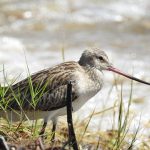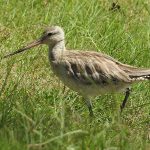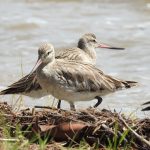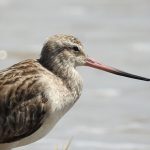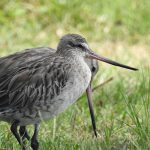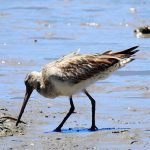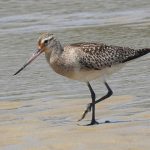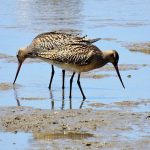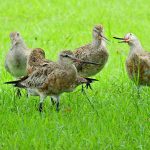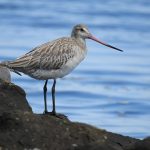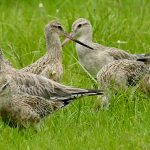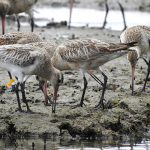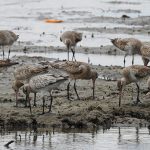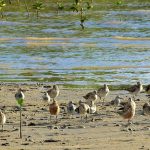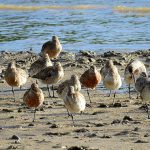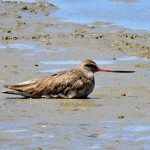BAR-TAILED GODWIT
The Bar-tailed Godwit is a true globetrotter. In Australia, they are commonly spotted along the coastline, where they rest and refuel during migration. Their journey, however, spans continents. They are known for one of the longest non-stop flights in the animal kingdom.
A tagged Bar-tailed Godwit was recorded flying non-stop from Alaska to New Zealand, covering a distance of over 11,000 kilometers in nine days, one of the longest recorded journeys without a break. This incredible feat requires immense endurance and is a testament to their strength and adaptability.
To prepare for their long flights, Bar-tailed Godwits undergo physiological changes, including shrinking their digestive organs and increasing their muscle and fat mass, to better store energy for the journey.
During the breeding season, which occurs in the late spring and summer, they are found in the Arctic regions of the northern hemisphere, including Scandinavia, Russia, and Alaska. When autumn arrives, they migrate south to warmer climates, reaching as far as New Zealand and the southern coasts of Australia.
The breeding grounds of the Bar-tailed Godwit are a stark contrast to their winter habitats. They nest in the open tundra, where the female lays a clutch of about four eggs. Both parents share the responsibility of incubating the eggs, and once hatched, the chicks are relatively independent. They are precocial, meaning they are well-developed at birth, and start feeding themselves shortly after hatching, although still under the watchful eyes of their parents.
These birds are most often seen along mudflats and sandy shores, probing the wet sands with their long, slightly upturned bills. Their diet mainly consists of invertebrates, including worms, shellfish, and insects. The godwit’s feeding technique is quite fascinating; it uses its sensitive bill to detect prey beneath the surface, often swallowing its food whole while still submerged.
Bar-tailed Godwits have an impressive lifespan for birds, living up to around 20 years.
While they are not currently considered endangered, their habitats, especially breeding and feeding grounds, are threatened by human activities such as land reclamation and the drainage of wetlands. Conservation efforts are crucial to ensure the survival of their populations.
The Bar-tailed Godwit is not just a bird; it’s a symbol of endurance, resilience, and the interconnectedness of the global ecosystem. Through understanding and appreciating these creatures, we are reminded of the beauty of nature’s cycles and the importance of preserving the natural world.

